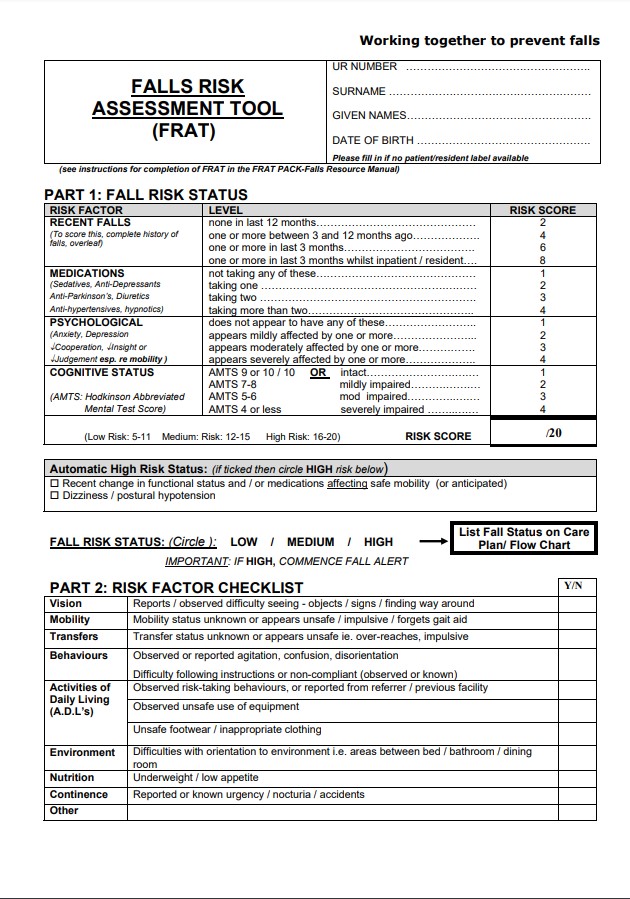Not known Details About Dementia Fall Risk
Not known Details About Dementia Fall Risk
Blog Article
Some Known Questions About Dementia Fall Risk.
Table of ContentsThe Only Guide for Dementia Fall RiskSome Known Facts About Dementia Fall Risk.Dementia Fall Risk - QuestionsThe smart Trick of Dementia Fall Risk That Nobody is Talking AboutDementia Fall Risk Fundamentals Explained
You could be nervous since you've had a loss before or due to the fact that you've noticed you're starting to feel unsteady on your feet. You could have seen modifications to your health and wellness, or simply seem like you're reducing a little. Whatever the factor, it isn't unusual to end up being mindful and lose confidence, and this can quit you doing the things you utilized to do and make you feel much more separated.If you have actually had an autumn or you have actually begun to really feel unsteady, inform your doctor even if you really feel fine or else. Your doctor can inspect your balance and the means you stroll to see if improvements can be made. They might be able to refer you for a drops threat assessment or to the falls prevention service.
This details can be gotten through interviews with the person, their caretakers, and a testimonial of their clinical documents. Begin by asking the specific regarding their background of falls, including the frequency and situations of any recent falls. Dementia Fall Risk. Inquire regarding any mobility troubles they might experience, such as unstable or difficulty strolling
Conduct a complete evaluation of the individual's medications, paying particular attention to those recognized to increase the threat of falls, such as sedatives or medicines that lower blood stress. Identify if they are taking numerous drugs or if there have been current adjustments in their drug program. Assess the person's home atmosphere for possible dangers that might boost the threat of falls, such as poor lights, loosened carpets, or lack of grab bars in the restroom.
Getting The Dementia Fall Risk To Work
Overview the person with the fall danger evaluation form, discussing each concern and recording their responses precisely. Determine the complete risk score based on the reactions offered in the assessment type.
Regularly keep track of the individual's progress and reassess their danger of falls as required. Provide ongoing education and learning and support to advertise safety and reduce the threat of falls in their day-to-day living activities.
Several studies have shown that physical treatment can assist to minimize the risk of dropping in adults ages 65 and older. In a new research (that checked out drops danger in women ages 80 and older), researchers determined the financial influence of selecting physical treatment to avoid falls, and they found that doing so conserves $2,144, consisting of all the hidden expenses of your time, discomfort, missed out on life events, and the dollars paid for services.
The 4-Minute Rule for Dementia Fall Risk
Inspecting your heart rate and blood pressure dimensions at rest and while you change positions (from sitting or existing to standing). A basic test of your reasoning (cognitive) capabilities. Analyzing your equilibrium, toughness, and strolling capability. A basic vision test. Evaluating Home Page your feet and footwear. A home security assessment. Based on the analysis results, your physical specialist will certainly design a strategy that is customized to your certain needs.
Older grownups who have difficulty strolling and talking at the same time go to a greater risk of dropping. Dementia Fall Risk. To assist increase your safety and security during daily tasks, your physical therapist might create a training program that will challenge you to preserve standing and walking while you do another job. Examples include strolling or article standing while counting backward, having a conversation, or lugging a bag of groceries
Your physical therapist also can recognize which tasks you ought to stay clear of to stay safe. Community-based drops avoidance programs assist people to: Minimize their concern of falling. Set objectives for enhancing their exercise. Make their homes safer. Exercise extra to enhance their toughness and balance. These programs often are led by volunteer trains.
See This Report on Dementia Fall Risk

Measles, or rubeola, is a very contagious, acute viral contagious disease caused by the measles virus. Some individuals think about measles as just a breakout and fever that removes up in a couple of days; nevertheless, measles can create serious health and wellness difficulties, particularly in kids more youthful than 5-years-old. The very best protection against measles is the measles, mumps, and rubella (MMR) vaccine.
Autumns are an usual source of injury among older adults. According to the CDC, in one year alone, fall-related injuries added to over $50 billion in medical prices (Dementia Fall Risk). In healthcare facility setups, older grownups go to specifically high threat of drops due to the fact that their lowered movement from being restricted to a space or click for more bed.
The smart Trick of Dementia Fall Risk That Nobody is Talking About

She has a case history of seizure condition and hypertension. She is obtaining an IV mixture and taking Gabapentin and Lasix. She has no history of drops, her stride is constant, and she nullifies with no concerns. The previous registered nurse states that she calls for support to the restroom when she requires to go.
Instances of typical loss interventions/measures include: Making certain an individual's necessary items are within reach. Past understanding exactly how to make use of the Johns Hopkins Fall Danger Assessment Tool, it's vital that facilities integrate its usage right into a more thorough fall prevention plan.
Report this page